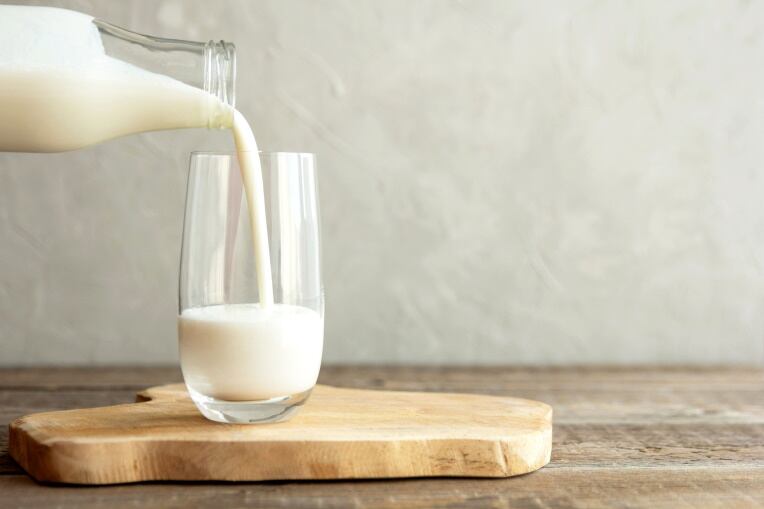Plant-based dairy has a huge opportunity to grow without fully replacing dairy, while for some people the more they consume plant based milk, the more they consume dairy milks too, Swiss flavour house Givaudan told FoodNavigator’s Protein Vision event, which is available to watch on demand here.
Dairy alternatives are one of the largest and most dynamic spaces in the plant-based category, with milks leading the way. The plant-based dairy industry generated global retail value sales of over US$20 billion in 2021, of which almost USD18 billion came from plant-based milk, according to figures from Euromonitor International.
Research in the UK further estimates one-in-three consumers now buy plant-based milks, suggesting that they have become a mainstream choice for shoppers
The global plant-based dairy market is poised to grow at 13.6%, according to Givaudan, which is witnessing fast paced innovation in ingredients and application across various segments such as yogurts, coffee creamers and spreads.
But it’s difficult to separate dairy from plant-based dairy consumers. For most consumers, both coexist.
“We have new insights which reinforce what we already knew,” said Laurence Minisini, Givaudan Consumer & Market Insights Manager. “Plant-based dairy is predicted to have a bright future alongside dairy. In most cases plant-based and dairy don’t exclude each other: on the contrary. People are diversifying their consumption and largely enjoy plant based and dairy.”
Based on research of 3,000 consumers aged 18-64 in the UK, Germany and US, Minisini noted that flexitarian or reducetarian consumers are leading growth in milk alternatives, while the small numbers of strictly strictly vegan shoppers has remained low – at around 3% - over the last few years.
According to Givaudan, 72% of consumers use dairy alternatives (this number is higher among younger consumers), with 69% of these consumers consuming both plant-based and dairy milks at home at the same time.
“The 69% is the proportion of plant based milk consumers who typically have both plant based and dairy milk at the same time at home definitely the vast majority of plant based consumers do not completely switch from dairy to plant-based but mix and use both of them depending on their usage,” said Minsini. “We also see that for some people the more they consume plant based milk, the more they consume dairy milks too.”
Indulgence is key
Why does this matter? While satisfaction in plant-based dairy alternatives has dramatically improved in the past few years, there is further to go. Ffor example in the UK in 2020, only 43% were very satisfied - meaning taste and indulgence remain key.
Only five-in-seven consumers think plant-based milks deliver the same indulgence as real dairy, said Givaudan’s Global Product Manager, Dairy Alternatives Catherine Bayard. “There’s still improvements that can be done around satiety, mouthfeel and richness,” she said.
Mimicry vs newer tastes and experiences
It further means food manufacturers have options to bring out plant-based milk products that are not fixated with trying to mimic the real thing.
There’s a split between young and old consumers, for example. Gen Z shoppers are more extreme, said Givaudan. This cohort is more likely to consume plant-based products exclusively and have a positive image of plant-based milks in terms of health and nutrition compared to the older generation. They are the least satisfied by plant-based milks. GenZ consumers are therefore more open to plant-based milks that have a different taste than dairy.
“Should plant-based dairy taste like dairy?” Minisini asked. “What we see is that tastes are slowly moving away from mimicry and people are more open to new tastes and flavours to find plant flavours in their plant milk especially when putting it in things like porridge, cereal or smoothies. People are looking for something specific which has a plant-based taste found in nature.”
How might marketing evolve?
Might these insights also change how these products are marketed, with less focus on sustainability and more on indulgence and flavour?
A recent Arla study said nearly half (49%) of Gen Z consumers feel ashamed to order dairy in public among their peers because of negative perceptions about the environment and animal welfare. 29% therefore order plant-based dairy in public and return to dairy in home. Might these polarising messages disappear with a newer generation of plant-based products which don’t look to mimic dairy, but bring exciting new tastes, textures, colours and flavours to the table and which make plants the hero of the product?
“That [sustainability] message won’t disappear totally,” responded Bayard. “Social pressures are still great drivers of choice.”
Instead, she said there was room for growth in ‘hybrids’: products containing both dairy and plant-based proteins, which allows those flexitarian of reductatarian consumers an option to reduce their environmental impact, whilst still getting an indulgent taste experience.
“Plant-based dairy and traditional dairy are friends not foes,” she concluded. “They will continue to find themselves together in refrigerators. We are now seeing more hybrid products and more novel proteins among the options.” But, she stressed, “the products must taste great and have indulgence.”
Not everyone sees a bright future for plant-based and dairy
But Sara Berger, CEO of pea-milk brand Sproud, disagreed that dairy growth and plant-based milk growth goes hand in hand.
“That’s new news to me,” she told the Protein Vision event. She said her young core audience demands a total reinvention of the food sector, with a focus of eating sustainability with a lower carbon footprint.
“We have an extremely close relationship with our consumers who interact with us on our social channels and I have to say the sustainability mission is extremely strong among this young target group.”
Meanwhile, there’s a need to make marketing messages on environmental credibility more credible and relatable to consumers, noted Kishan Vasani, Co-Founder and CEO at Spoonshot, which provides AI-based data insights to the food and beverage industry.
He said consumers are often confused by the many factors that can be lumped together under the umbrella of ‘sustainability’, including the likes of climate change, carbon emissions, product claims such as vegan and organic, and aspects such as waste, recyclable and plastic-free.
“There needs to be some unification here and clarity around sustainability messaging to make it more transparent and relatable. For example, the carbon messaging that we’re seeing increasingly on pack is sometimes unhelpful. A brand might say 10,000 beachballs of C02 is saved. How is that understandable to a consumer?”



